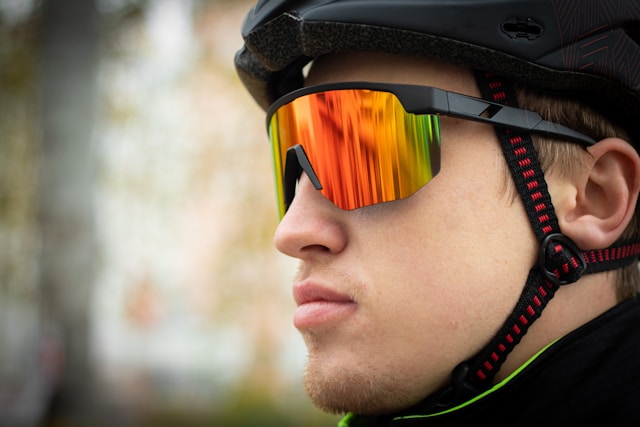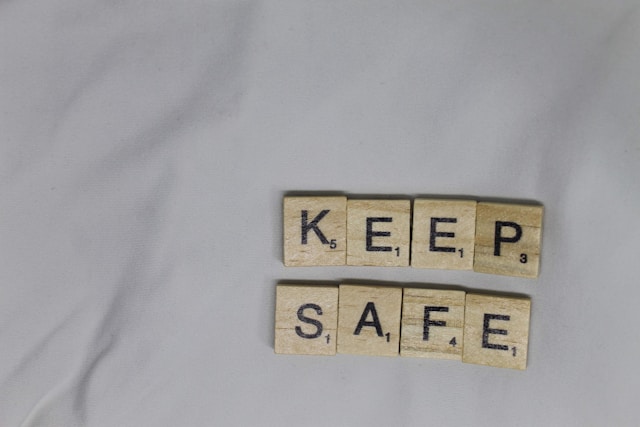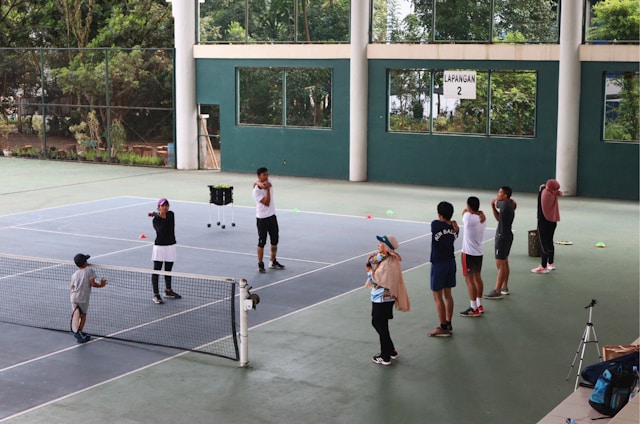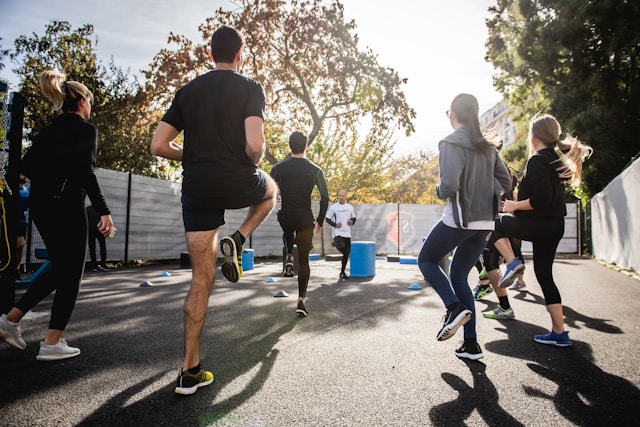SPORTS AND EXERCISE SAFETY
Most amateur athletes don’t think about how important it is to have the right or best gear while they play their favorite sport.
Most of us tend to overlook the importance of taking proactive care of our muscles, joints, eyes, feet, and other vital body parts until an unfortunate incident occurs.
This is an intriguing fact that many people are unaware of. Using a badly strung racket while playing tennis, along with worn-out shoes, almost equally increases your chance of injury as playing football without shoulder protection.

That’s crazy, right? This helps to zero in on the small things that often go unchecked because of a lack of understanding of the need for upkeep and maintenance of sports equipment and personal gear used in sports.
One of the main reasons people get hurt on the field is due to the use of the wrong equipment or improper fitting of their gear. These two mistakes can lead to serious injuries.
So, let’s be proactive when we play. Below are some helpful tips you can use to stay safe while staying in the game. Let’s get started!

HELMETS ARE ESSENTIAL
The key to avoiding accidents during sports and other activities is the gear you wear.
First and foremost, helmets are essential for various sports and activities, including but not limited to any king of skating, skiing, baseball, football, hockey, softball, bike riding, lacrosse, horseback riding, skateboarding, and snowboarding. Helmets help reduce the incidence of head injuries by 75% to 85%. Although they do not prevent concussions, helmets significantly lower the number of injury-related deaths.
Always be consistent in your use of a helmet. It is wise to choose and always wear your helmet for the specific sport you are playing. In addition to being certified for use, your helmet should be properly fitted, maintained, and worn regularly. Look for a sticker on a bike helmet stating it meets Consumer Product Safety Commission (CPSC) mandated safety criteria. The CPSC is a federal regulatory body that develops safety guidelines for gear such as bike helmets. Unless they contain the CPSC sticker, multisport helmets used for skateboarding and inline skating are not regarded as safe for riding a bicycle.
Are you having trouble determining the right size helmet for you? Just above your ears and eyebrows, wrap a gentle tape measure across your forehead. Next, compare the size of your head to that of the helmet.
Helmets shouldn’t slant forward or backward; instead, they should fit your head horizontally and snugly but comfortably. The buckle should always be fastened, and the straps should make a “V” shape around your ear. After an accident, every helmet should be replaced because there may be more invisible damage.

EYE PROTECTION
Many sports require eye protection gear. Adolescents and teens should prioritize wearing protective face gear. The reason for the suggestion is the data. Being active in sports is the leading cause of eye injuries in teens. However, wearing proper-fitting protective eyewear can reduce the risk of serious eye injury by 90%.
Trivex or polycarbonate lenses compose the most protective eyewear, which has undergone specific testing for use in sports.
When batting in sports like baseball, softball, lacrosse, ice hockey, and football, players wear facemasks or polycarbonate guards or shields that fasten to their helmet.
Players frequently wear goggles when fielding in sports such as baseball, softball, street hockey, lacrosse, paintball, basketball, racquet sports, snowboarding, and soccer.
If it is required for you to wear prescription glasses, the best idea is also to purchase prescription polycarbonate goggles. Wearing your usual glasses or contact lenses on the field or court can be done; however, doing so doesn’t offer the highest level of protection possible. Every piece of eye protection should fit snugly and have cushions over your nose and eyebrows. If eye protection becomes damaged or begins to turn yellow with age, it should be replaced.
Shielding your eyes from UV rays while participating in aquatic sports, mountain climbing, or skiing is also recommended. This suggestion can also protect cyclists from wind, bugs, dust, and other flying debris that is prone to get into riders’ eyes while cutting through the wind. The American Society for Testing and Materials (AMTM) requirements should be adhered to by all eye protection.

BODY PROTECTION
All contact sports recommend mouthguards to reduce dental injuries.
If you participate in a contact sport that puts your head at risk, like wrestling, boxing, martial arts, hockey, basketball, lacrosse, football, or volleyball, wear a mouthguard. Mouthguards can be bought at sports stores and should be fitted for your mouth by a dentist.
Rinse your mouthguard after each usage to keep it clean.
Always remove your retainer before beginning any workout, practice, or play.
Additionally, other crucial equipment that should be considered and used is elbow, knee, and wrist guards.
Wearing protectors is also advised if you ride a scooter, snowboard, skateboard, or inline skate. Protect yourself from cuts and breaks to the knees with knee guards. Likewise, use the specific guards for your elbows and wrists as well.
Pads are used in a wide variety of sports, including inline skating, volleyball, hockey, and soccer. The elbow, knee, wrist, chest, shoulder, hip, and thigh pads are all part of the set. To find out which kind of athletic pads are appropriate for your sport, see your physician or coach.
A groin cup is essential for boys and men participating in hockey, football, basketball, baseball, soccer, and other contact sports where the groin area is at risk of injury. An athletic supporter is a wise choice for men who indulge in running. Ask your coach, sports trainer, or parent whether your sport requires a cup or supporter if you are not sure.
Common sports that require cleats include football, softball, and soccer. You might not know, though, that activities like bicycling and skateboarding also require specific types of shoes. Consult with your coach or doctor to determine which shoes are best suited for your specific sport. Replace cleats and shoes that have worn out or lost their supporting power.
An excellent fit is just as crucial as the right type of equipment. If you’re unsure whether your equipment fits properly, consult a coach, gym teacher, athletic trainer, or parent to ensure you have the correct size and are wearing it appropriately. Many sporting goods stores can assist you in finding the correct fit.

WARMING UP & STRETCHING
The ideal way to start with any type of sport is to begin with a warm-up and stretching regimen. Warming up cold muscles before putting them into motion will help prevent injury.
Start off with some simple aerobic exercises like running, jumping jacks, shuffling, high knees, or butt kicks. These are all great ways to get your heart rate up. Your heart rate and body temperature will both increase as a result of them, and your muscles will become warmer. Perform some active stretches once you have finished your ten-minute warm-up. When you stretch after a warm-up, your tissues are more flexible because of the increase in heat and blood flow to the muscles. This is why stretching is most effective after a warm-up.
It is important to remember to stretch as well. Do some dynamic stretching before you start playing. For example, arm circles, forward lunges, side lunges, toe walking, heel walking, inchworm, and toy soldiers are all examples of dynamic stretches that should be performed prior to performing exercises.
Static stretching should be performed after activity to prevent overstretching the muscles and prepare them for strenuous work. Stretch a muscle in a slow and controlled manner until it reaches a degree of mild discomfort, and then hold the position for thirty seconds. The following are examples of static stretches: wrist stretch, hamstring stretch, standing quadriceps stretch, calf stretch, shoulder stretch, groin stretch, back stretch, iliotibial band stretch, triceps stretch, and chest stretch.
Not only are warm-ups and stretches essential, but practice sessions are also a wonderful way to prepare for a wide variety of sports and activities. If you are a member of a team, you should spend as much time as possible in team practices and games. It is essential to practice frequently to gradually increase your level of participation. To get into condition, you should typically begin your workout routine three weeks before the beginning of your season. Your physical fitness will improve as a result of this, and it will also make it easier for you and your coworkers to collaborate. In addition, being aware of the way your teammates play will assist in preventing injuries.
You can raise your performance and lower your risk of injury by engaging in regular exercises and practices, even if you are not a member of a team. Through consistent practice, you can maintain your physical fitness. For example, prior to beginning a set, you could try practicing your serve or performing tennis drills. Have a fast game of one-on-one basketball with a friend or shoot some baskets for some fun. Your brain and body will work together more effectively via practice, which will also improve your performance.
Be sure not to overdo it, even though you should practice on a regular basis. There is a possibility that sudden increases in training frequency, duration, or intensity will initially result in improved performance; however, these increases may eventually lead to overuse injuries. You should schedule a day off to rest in between days of activity, and you should switch up the activities you do. In the event that you run a lot on a particular day, combine it with swimming or weight training on the next day. Helping you build a training and conditioning program that is appropriate for your age and degree of development is something that your physician or coach can recommend to you.
MY LAST TWO CENTS
Whether indoors or outdoors, getting out to play allows us all to take steps to protect ourselves from injury. The purpose of this article is to underline the need of aggressive safety precautions. As you can see, the small details require the most attention, but if addressed, they can significantly help protect you from injury.


Leave a Reply